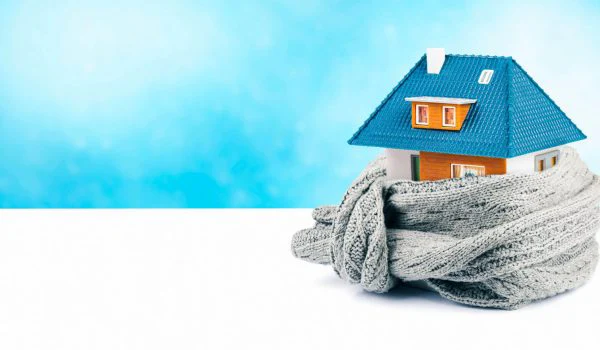
Is R38 Insulation Worth It?
Homeowners across Los Angeles ask the same question each summer: is R38 insulation worth it for an attic? In short, yes in many homes — but context matters. The right R-value depends on your roof, HVAC setup, utility rates, and the microclimate of your neighborhood, from Santa Monica’s marine layer to the Valley’s triple-digit heat. Here is how a local installer views R38 in real Los Angeles homes, including where it pays off, where it can be overkill, and how to avoid common mistakes.
What R38 actually means
R38 measures resistance to heat flow. The higher the number, the slower heat moves through. In typical fiberglass batts or blown-in fiberglass, R38 equals roughly 12 inches of settled depth. With cellulose, that depth is closer to 10 to 11 inches because cellulose has a higher R per inch. Spray foam values differ and are handled by thickness calculations, not loose-fill depth charts.
The second piece that matters is climate zone. Los Angeles County spans several microclimates and building code paths. Most single-family homes fall into California Climate Zones 6, 8, 9, 10, 14, and 16 depending on location and elevation. Current state energy code often targets R30 to R38 for vented attics, with some pathways allowing R30 if space is limited. R38 is a common best practice for comfort and energy savings in hotter parts of the county.
Where R38 shines in Los Angeles
Homes in the San Fernando Valley, Woodland Hills, Northridge, Burbank, Pasadena, Glendale, and the eastside tend to feel the biggest difference with R38. These areas run hotter and dryer, with roof decks that bake from late morning to sunset. An attic with R38 slows afternoon heat gain, so living rooms and bedrooms stabilize earlier in the day. AC runtime drops, and ductwork in the attic operates in a cooler envelope.
Along the coast — Santa Monica, Venice, Playa Vista, El Segundo, Redondo Beach — R38 still helps, though the gains lean more toward winter mornings and shoulder seasons. Owners see quieter rooms, fewer drafts through ceiling penetrations, and more stable indoor temperatures without constant cycling.
Hillside homes in Sherman Oaks, Studio City, Echo Park, and Mount Washington benefit in two ways. First, the sun hits more roof area across the day. Second, wind-driven infiltration is common along ridgelines. R38, paired with careful air sealing, gives both thermal resistance and a tighter lid on stack-effect leaks.
Energy savings and payback
Real numbers depend on utility rates, roof color, attic ventilation, duct location, and thermostat habits. In Los Angeles, a typical 1,400 to 2,000 square-foot home with an older R11 to R19 attic that upgrades to R38 often sees cooling bills drop 10 to 25 percent in the hot months. Winter gas savings are smaller in coastal ZIP codes and higher in the Valleys and inland foothills.
For a common case — 1,600 square feet, ducts in the attic, single-story in Van Nuys — moving from sparse R13 to R38 with air sealing can save roughly 15 to 20 percent on combined heating and cooling annually. At current utility rates, payback ranges from 3 to 6 years, sometimes faster when paired with duct sealing or a cool roof. Homes already near R30 may see a modest incremental gain to R38, but the comfort improvement can still justify the upgrade, especially in west-facing rooms.
Comfort: the benefit owners actually feel
Homeowners call after one or two nights with a cooler upstairs and quieter bedrooms. That matters more than any spreadsheet. R38 reduces ceiling surface temperatures during peak heat, so rooms feel less radiant warmth. It also evens out temperature swings between rooms, especially those with vaulted transitions or long hallways. For families with nurseries or home offices, that stability pays off every day.
The catch: installation quality makes or breaks R38
Insulation only reaches its labeled R-value when it sits at the right depth with no gaps or compression. In Los Angeles attics, the most common problems are can lights with missing covers, bath fan ducts leaking into the attic, and shallow coverage at eaves. Electrical junction boxes, catwalks, and storage platforms can crush and thin the insulation. That turns “R38” into R20 in the areas that matter most.
Before any R38 upgrade, a crew should air seal. That means sealing top plates, pipe penetrations, and wire holes with foam or caulk, boxing off can lights that are not rated IC, and capping chases. Then insulate to a continuous, even depth. Without air sealing, expectations should be adjusted; much of the thermal benefit leaks away through gaps.
R38 vs R30: how to choose
R30 often fits under lower rooflines or around complex truss webs. If attic height is tight near the eaves, it is better to maintain ventilation clearances and run an honest R30 than to compress R38. For homes that already have R19 to R22 and decent duct sealing, the jump to R38 might deliver a smaller utility reduction than the jump from R0 to R30. In those cases, Pure Eco Inc. usually advises an inspection to see if targeted air sealing, duct sealing, or radiant barrier will add more value than more inches alone.
Product choices that work in LA attics
Blown-in fiberglass and cellulose both work well for r38 insulation Los Angeles projects. Fiberglass is light, resists settling, and makes later electrical work easier to navigate. Cellulose fills cracks better and provides slightly higher density, which helps with sound and reduces convection in windy attics. In unconditioned, vented attics, either material performs well when installed to the correct depth with baffles at eaves and proper coverage over joists.
Spray foam is a different strategy. Closed-cell or open-cell foam under the roof deck converts the attic into a semi-conditioned space and can be effective where ducts must live in the attic and rooflines are low. It costs more, may require a different ventilation plan, and should be evaluated against project budget and roof condition. For most Los Angeles homes, blown-in materials to R38 provide strong value per dollar.
Ventilation, baffles, and eave depth
Los Angeles roofs often have shallow eaves. Without baffles, insulation blocks soffit vents and traps heat. attic insulation Los Angeles Proper baffles keep air moving from soffits to ridge or gable vents and protect the required insulation depth at the edges. Continuous depth matters more than big piles in the center. A flat 12 inches at the perimeter performs better than 16 inches in the middle that fades to 6 inches along the eaves.
Ducts in the attic: the multiplier effect
If supply and return ducts run through a 130-degree attic, every extra inch of insulation helps the system. R38 lowers surrounding air temperature during peak hours and reduces conductive gains through the ceiling, so registers deliver cooler air that does not get reheated before it reaches the room. For many Valley homes, this is where the quickest payback shows up. Pairing R38 with duct sealing to SMACNA standards and mastic at all joints often compounds savings by another 10 to 20 percent.
Small details that separate a good job from a great one
- Air seal first: top plates, chases, can lights, flues with fire-safe materials.
- Protect recessed lights: use code-approved covers or replace with IC-rated, airtight cans.
- Maintain ventilation: install baffles at every soffit vent run.
- Mark utilities: flag junction boxes and create catwalks to the furnace or air handler.
- Verify depth: measure settled depth after 24 to 48 hours, not just during blowing.
Common myths about R-values in Los Angeles
Some owners hear that “insulation is for cold climates.” Los Angeles heat loads are real, especially from June through October. Another myth says “more is always better.” There are diminishing returns: the jump from R0 to R19 is dramatic, from R19 to R30 is strong, and from R30 to R38 is meaningful but smaller. That last step often hinges on comfort goals, AC runtime, and duct location. Finally, “foil alone does the job” gets repeated. Radiant barriers can help under certain roofs, but without sufficient R-value, rooms still gain heat through conduction. A balanced approach outperforms any single trick.

What a typical Pure Eco Inc. R38 project looks like
A two-bedroom Spanish in Mar Vista had patchy R11 batts, recessed lights from the 90s, and a noisy bathroom fan that vented into the attic. Summer bedrooms hit 79 to 81 degrees at night without AC. The crew air sealed top plates and penetrations, replaced the fan with a quiet unit vented outdoors, boxed the cans, added full-length baffles, and blew in cellulose to R38. The owner reported bedroom temps holding at 75 to 76 with less AC and noticed quieter mornings. Utility data over three months showed a 17 percent drop versus the prior year, adjusted for weather.
A ranch in Sherman Oaks with ducts in the attic had R19 and significant duct leakage. After sealing ducts and adding blown fiberglass to R38, AC runtime during peak heat dropped roughly 25 percent based on thermostat logs. The home felt more even, especially in a west-facing den that had been difficult to cool.
How to decide if R38 is worth it for your home
Start with an attic inspection. Check current insulation depth, look for dark streaks that show air leakage, confirm ventilation pathways, and note duct location. If insulation measures under 8 inches in most areas, R38 is usually a smart upgrade. If depth already averages 10 inches or more and the home still runs hot, address air sealing, ducts, and attic ventilation alongside any top-up.
Homeowners in Los Angeles who plan to keep their properties for several years usually see both comfort and financial returns with r38 insulation Los Angeles installations. Those preparing for sale may still benefit; appraisers and buyers pay attention to energy features, and cooler rooms during showings make a difference.

Why work with a local crew
Local crews see the same rooflines, can light brands, and code nuances week after week. That familiarity speeds problem-solving: which soffit vents clog with paint, which tile roofs trap heat, which neighborhoods run into permit quirks. Pure Eco Inc. focuses on attics and insulation across Los Angeles, from Silver Lake bungalows to Porter Ranch two-stories. That focus means faster site work, cleaner prep, and fewer call-backs.
Ready to talk R38 for your Los Angeles home?
Pure Eco Inc. offers attic inspections, honest assessments, and clear pricing. If R38 makes sense, the team explains the expected savings and comfort gains based on your roof, ducts, and neighborhood. If R30 or air sealing gives better value, they will say so.
Call Pure Eco Inc. to schedule a local assessment. Get a plan that fits your home, your budget, and Los Angeles weather — and enjoy rooms that feel right, day and night.
Pure Eco Inc. provides professional attic insulation and energy-saving solutions in Los Angeles, CA. For over 20 years, our family-owned company has helped homeowners improve comfort, reduce utility bills, and make their homes more energy efficient. We specialize in insulation upgrades, spray foam installation, and attic cleanup for homes across Los Angeles County. At Pure Eco Inc., we believe in treating our customers like family and creating a greener, healthier living environment for every household we serve. Call today to schedule an attic insulation inspection or get a free estimate. Pure Eco Inc.
422 S Western Ave #103 Phone: (213) 256-0365 Website: https://www.pureecoinc.com Social Media:
Facebook |
X |
Instagram |
Yelp
Map: View on Google Maps
Los Angeles,
CA
90020,
USA